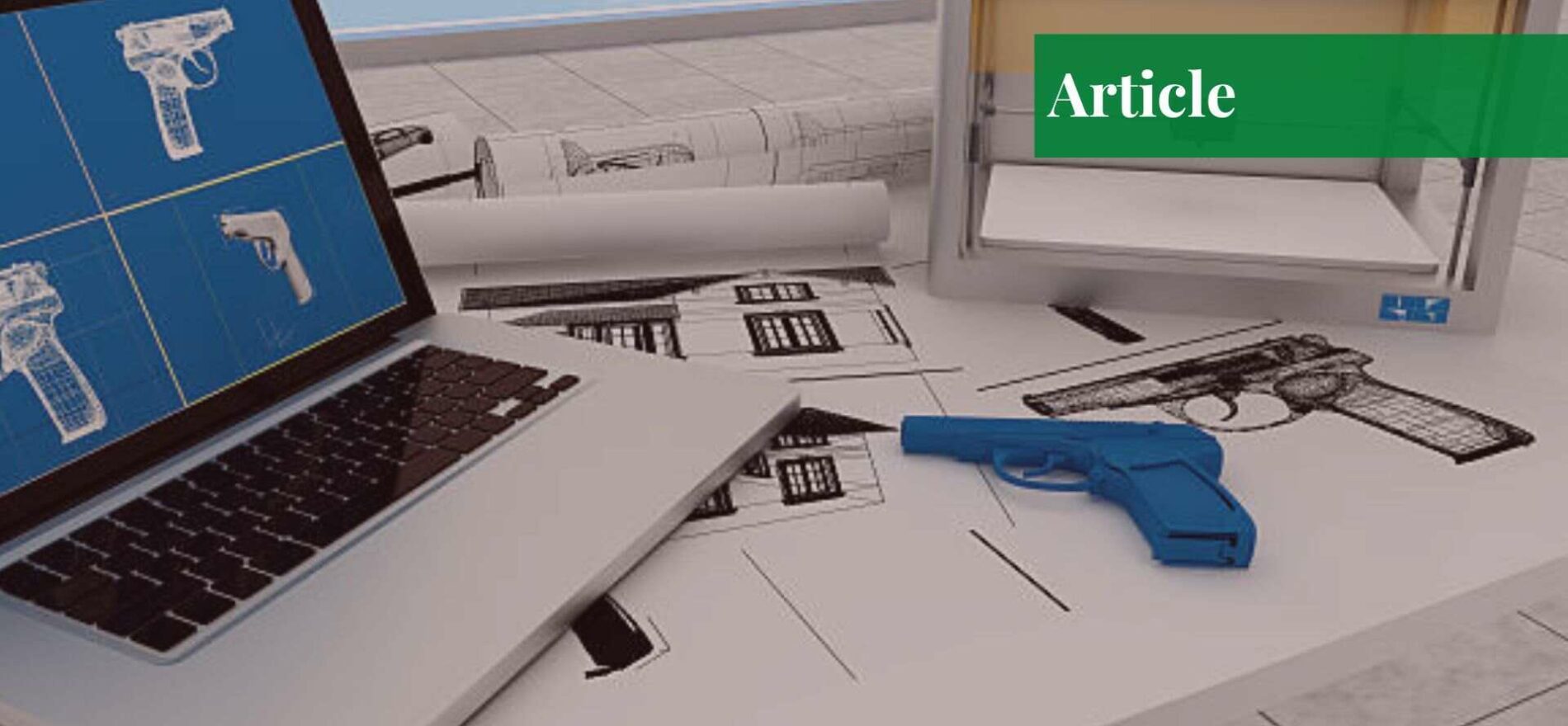Zoya Usman holds a graduate degree in Peace and Conflict Studies and is currently pursuing
her MPhil in International Relations from the National Defence University, Islamabad.
Introduction
The union of AI with 3D printers has produced a time and cost-efficient tool that helps users construct innovative structures and designs. It has proven to be a revolutionary innovation that has aided progress in prototyping, healthcare, robotics, and aerospace. However, although these AI-backed 3D printers provide economic nourishment and growth, this combination has also given rise to the fear that such printers can manufacture undetectable 3D weapons that can change the future of war.
A 3D firearm, alternatively known as a ghost gun, is built using 3D printing technology. Unlike traditional weapons, these firearms are often constructed with plastic and metal. Ghost guns lack serial numbers and can be produced at home simply by downloading their blueprint online. These blueprints are easily detectable and can spread quickly.
However, do they demand immediate attention? Pessimists find them to be a major concern, while optimists believe that, although they are not an easy construct, they still pose a threat if they fall into the wrong hands. An in-depth analysis has become prevalent on the topic of 3D weapons: their downloading, manufacturing, capabilities, legality, and the global threat that they are capable of causing.
The Liberator – First 3D Gun
In May 2013, US citizen Cody Wilson developed the “Liberator,” the first 3D pistol with the ability to shoot once without causing damage to the shooter or the gun itself. Unlike traditional manufacturing prints of firearms, the computer files for the design of the Liberator were made available online to be downloaded and printed by anyone around the world.
The Liberator is built with plastic as its main component, and the capacity for a singular shot lessens the threat of any major attack. It was downloaded 100,000 times in the first two days of its release before the US pulled down the website. Major downloads were done in Spain, Brazil, and the UK. Shutting down the website did not help much, as the blueprints were already in the wind.
The US Bureau of Alcohol, Tobacco, Firearms, and Explosives (ATF) conducted a test to analyze the capabilities of the Liberator, after which it was concluded that the 3D gun was not as powerful as a traditional weapon but still posed a serious security threat; like other weapons, it could shoot precisely and cause lethal damage.
Advancements have been made with time, but even now, truly efficient 3D-printed weapons include metal, making them detectable. However, the United Nations still suggests that governments stay cautious as technological advancements peak.
Durability and Accessibility of Ghost Guns
The manufacturing of 3D firearms requires a few steps:
- A blueprint is created with the help of computer-aided design software (CAD).
- The blueprint is then converted to a standard tessellation language file.
- The material of choice is selected. Critical choices are made regarding different types of plastic and metal.
The 3D printing process involves a layer-by-layer toppling of material, keeping in view the digital design. Following the design, the frame, barrel, and trigger are composed. Once all components are processed, they are assembled to form a firearm. The durability of the 3D firearms varies from model to model and depends on the type of plastic used. Considering the capabilities and access of 3D firearms, they pose a huge security concern both locally and globally. However, the most threatening factor is its accessibility.
The availability of blueprints online and the trade of 3D printers across the border can help extremists, terrorists, and lone wolves get their hands on a 3D weapon quickly, making societal security a concern. Jensen Haxel’s statement, recorded even before Liberator was developed, claimed that the Industrial Revolution would allow people to produce firearms at home, escaping all sorts of legal restrictions. Moreover, being a plastic weapon that is easily divided into parts aids these firearms in becoming undetectable at screening points, making their smuggling and disposal easy.
Case Study of Myanmar’s People’s Defence Force
After gaining independence from the UK, insurgencies became a constant companion of Myanmar, one of which escalated into a civil war in 2021. The military arrested the democratically elected President Aung San Suu Kyi, whilst claiming that the 2020 elections were a fraud. This act initiated a massacre against the ethnic minorities (mainly the Rohingya Muslims).
The well-equipped Tatmadaw (Myanmar’s Military) killed almost 23,000 civilians over 14 months. During this time, additive weapons became an alarming concern due to their use by civilians in Myanmar’s resistance movement. Initially, the aggressive civilian rebels made themselves makeshift shields and slingshots as they did not have access to traditional firearms, but they soon advanced to printed weapons.
On 28th March 2021, during a Tatmadaw raid over a protest camp, rebels responded with rifles and 3D-printed homemade guns. With no formal weapons training, the Myanmar People’s Defence Force printed a cheap and simple FGC-9. Myanmar’s rebels appreciated the use of such weapons to restore democracy. However, some governments, like the US, did not, claiming that it favors illegal usage and strengthens the ideology of gun rights advocates.
The digitality and affordability of these weapons allow the effortless downloading, sharing, and replication of 3D firearms without any regulation. Blueprints being available on the dark web, such as Defense Distributed, Wilson’s company, and Defcad, have lessened the risks of perpetrators getting captured, contributing to the rise of homemade firearms. This has increased the world’s legal and ethical concerns, especially in the West. There should be a middle ground, considering the capability of such weapons, to design a regulatory legal framework.
Laws and Regulations Regarding 3D Weapons
Laws and regulations regarding firearms, typically 3D-printed, differ from state to state. Several elements are considered while evaluating the legality of these firearms. Conventional weapons have serial numbers, while most 3D-printed ones do not, making them untraceable and automatically labeled illegal in most countries. In addition to that, owning an unlicensed firearm or making yourself a homemade weapon without any authorization is unlawful.
Pakistan has a complete ban on the trade or development of any 3D printed weapon, but no ban has been imposed on 3D printers as they are a need of the era. Moving towards the international community, no ban has been imposed yet on manufacturing such weapons. However, concerns have been raised regarding the ease of access to blueprints by anyone worldwide.
With technological evolution, legal regulations are mandatory as well. In this modern world where it is necessary to bring in advancements, there is also a need to understand and acknowledge the emerging threats that, if not entertained now, might lead to more destructive consequences.
If you want to submit your articles, research papers, and book reviews, please check the Submissions page.
The views and opinions expressed in this article/paper are the author’s own and do not necessarily reflect the editorial position of Paradigm Shift.


















